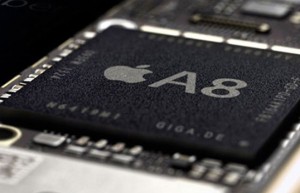Taiwanese tech manufacturer TSMC has begun to supply A-series chips to Apple Inc. (NASDAQ:AAPL), cutting back on the quantity of chips that the Cupertino enterprise purchases from its archrival Samsung. Though Samsung is continuing to manufacture chips for Apple as well, and is slated to do so at least through 2015, the actual delivery of A8 processors from another company demonstrates that its long-held monopoly over this supplying has been broken.
TSMC (an acronym for Taiwan Semiconductor Manufacturing Company) (NYSE:TSM) has been in business for almost 30 years, tracing its founding to 1987, when it was the only single-purpose semiconductor foundry on the planet. It currently operates eight fabrication facilities in Taiwan, plus one in the United States and one in mainland China. These facilities are capable of producing 6-inch, 8-inch, or 12-inch semiconductor wafers, depending on their configuration.

The capacity of Samsung to produce chips with a lower nanometer rating than TSMC is currently equipped to handle is one of the reasons why the Korean electronics company is still part of the production loop, besides the sheer manufacturing scale it is capable of. TSMC is currently manufacturing 20 nanometer semiconductors, and is consulting with Apple on the best ways to upgrade their facilities to handle 16 nanometer production.
However, the A9 processor chip will require 14 nanometer architecture, which Samsung is better equipped to handle – at least for the moment. Smaller nanometer sizes help to save power, increasing the length of time between battery recharges. The architecture also boosts performance and runs cooler than structures with higher nanometer sizes.
TSMC has already produced some semiconductor features for common Apple (AAPL) devices, most prominent of which is the Touch ID sensor built into the iPhone 5S. The chips are, of course, being shipped to the manufacturers actually constructing the iPhone 6 and any other devices that will be using the processors. The A8 processor is said to be a quad core design, another feature made possible by the steadily shrinking size of the semiconductor components.




